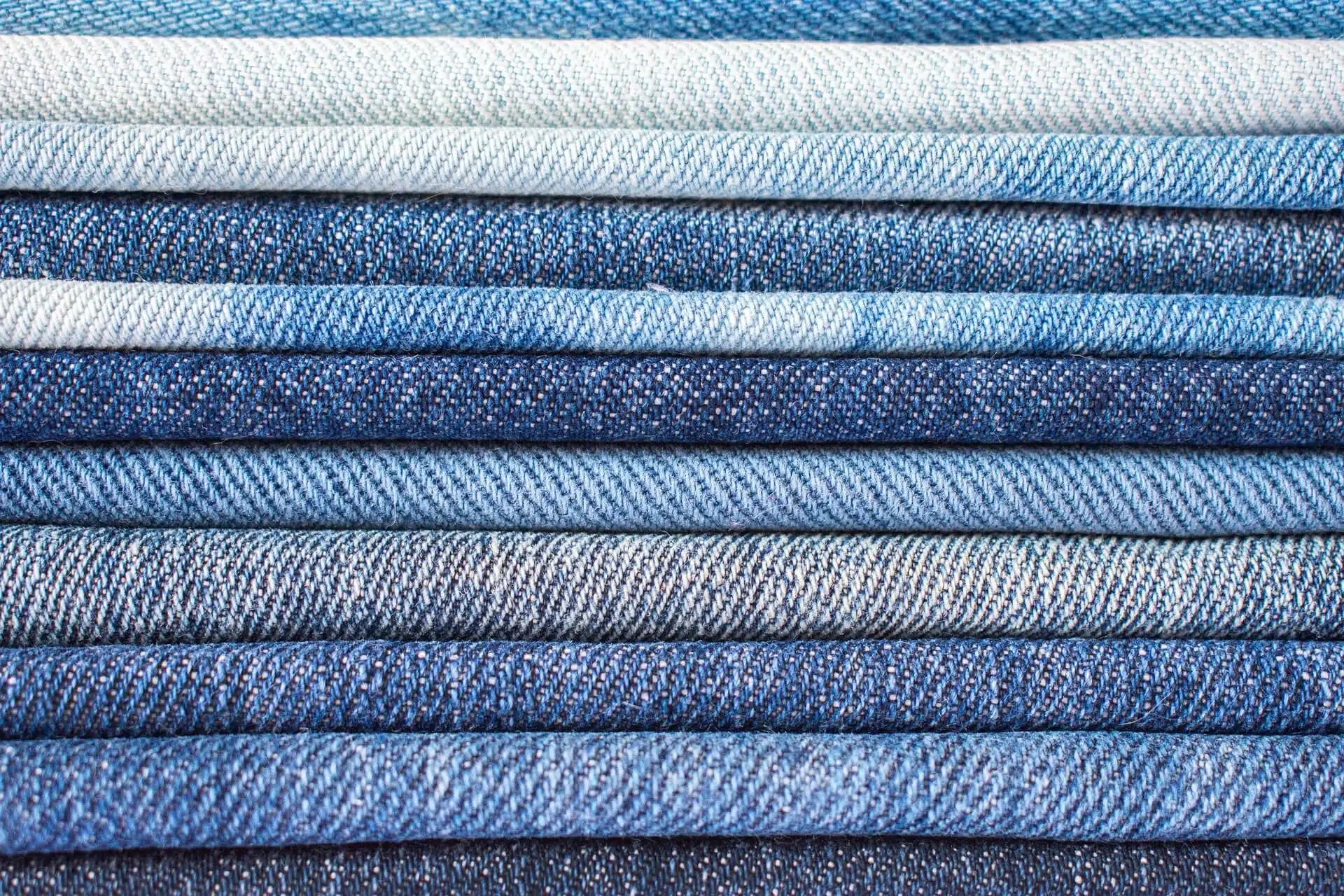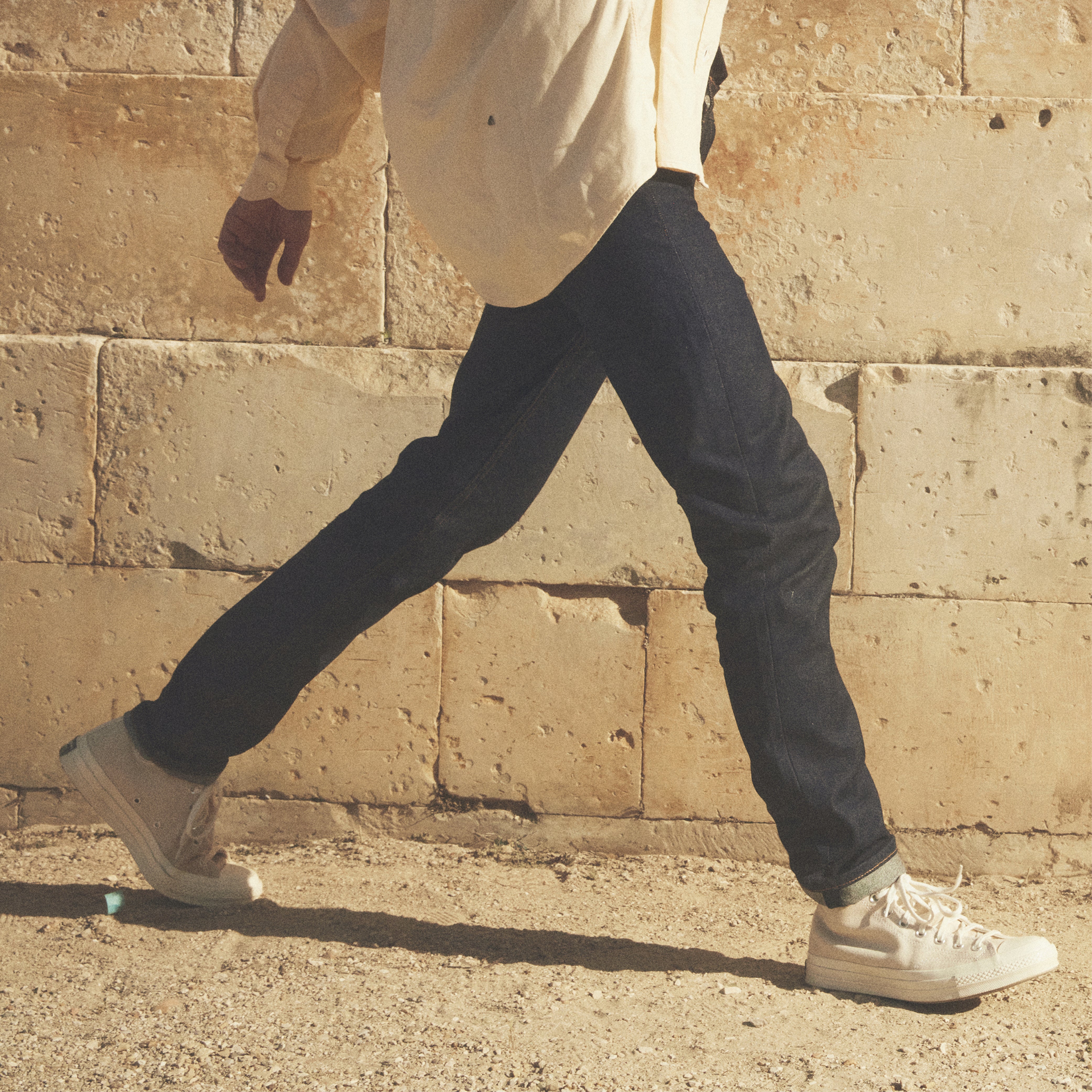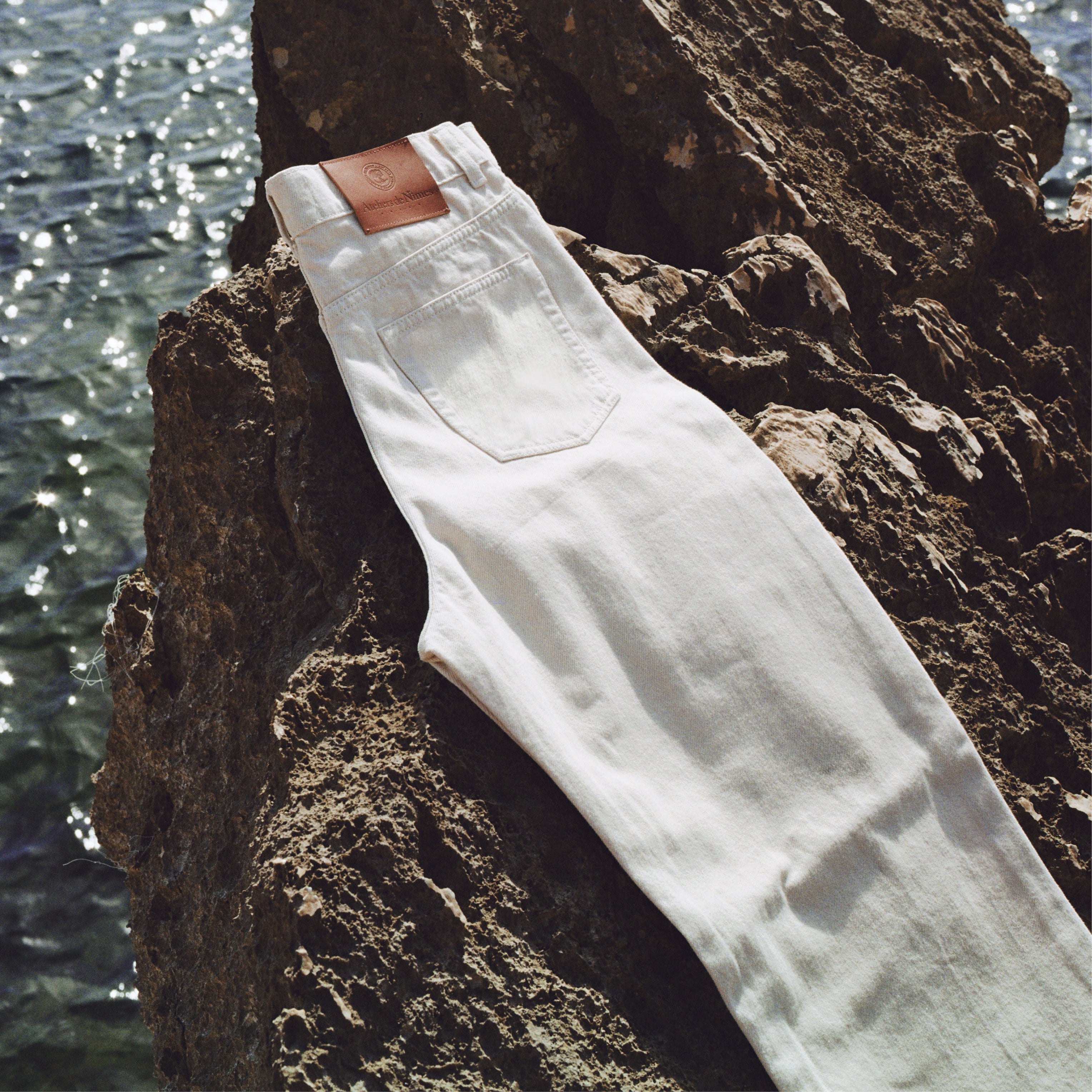Article: But what is the difference between good and bad denim?

But what is the difference between good and bad denim?
In the multitude of textile choices that the fashion world offers, denim takes first place. It is by far the most present fabric in the collections of brands around the world. Everyone has it in their wardrobe. You will find clothes made of denim, of all kinds and at all prices.
But a big question comes to mind, are all denims equal?
Indeed, for the layman, at a quick glance all denim looks the same. One thread is blue, another is white, in short it's fabric. Obviously you see where I'm going with this...
At Ateliers de Nîmes, denim weaving is our reason for being. Our experience and passion have allowed us, over the years, to acquire real expertise in this world. From an article that seems simple at first glance, denim is something that requires a lot of attention to detail, work and rigor. Both in its work and in the choice of material and finish.
The most important thing in denim, as in any good recipe, is the ingredients. And this choice requires a lot of learning, control and therefore time.
The raw material. Cotton and its sublimation.
The raw material, cotton, is one of the most important points. A cotton with long fibers will be easier to spin and therefore will allow to obtain a better quality thread. Gossypium hirsutum, also called Mexican cotton is today the most used fiber in the world, it is one of the best fibers. Gossypium barbadense, or Peruvian cotton (Supima) is considered to be the best fiber in the world, but it is very rare.
Next comes spinning and processing the cotton into fiber. There are two methods:
1- carded cotton.
The vast majority of yarns used to make denim or more generally textiles are spun into single yarns using carded cotton.
The natural fibers of the cotton will be untangled and aired. This is the process that allows the cotton to be spun. Carding does not allow the length of the cotton fibers to be selected, so it is composed of short and long fibers, which gives it a rougher appearance.
2- combed cotton
There is another way to transform cotton into fiber, called combing. This method is more qualitative. Indeed, the longer fibers of cotton are considered to be of better quality. Thus, by removing the shorter fibers, the long fibers intertwine more easily, giving a softer appearance to the textile. In addition, unlike carded cotton, combed cotton is silkier, shinier and stronger. Since the quality of combed cotton is higher, it is also more expensive. However, since combed cotton is more durable and resistant, it is a better investment.
The work of spinning and weaving.
All jeans brands source from around twenty suppliers based in China: Foison textile, Advance denim, Freedom denim
Pakistan: Azgard, Kassim denim, Rajby industries,
Bangladesh: Envoy textile limited,
India: LNJ denim,
Türkiye: Bossa, Isko denim, Realteks, Maritas denim, Kilim denim, Iskur denim, Calik denim, Kipas
Mexico: Cone Denim
Japan: Kurabo, Kuroki (mostly manufactured in China) Morocco: Tavex
Italy: Fabritex, Berto tessile, Candiani
France: Mouline Thillot Weaving, Weaving of France,
Generally, denim made in Japan, Italy, and to a lesser extent Mexico, Morocco and Turkey are considered to be of higher quality than others. But, even a trained eye would have a hard time telling the difference between a robrack and Italian denim. , Japanese, Chinese or Pakistani. Why?
All are manufactured industrially and use more or less the same threads, the same machines and the same settings. Denim is standardized. The main difference will be in the weight of the canvas, linked to the thickness of the threads used. To put it simply, the thicker the thread, the thicker and better the canvas will be.
Even the famous Selvedge cloth, woven on shuttle looms, is standardized. All production is now carried out by China, Turkey, Pakistan and India. About twenty shuttle looms are still in Italy at Berto and Candiani, but production remains low compared to other countries. In addition, the famous Japanese cloth is no longer produced in Japan. Brands such as Kurabo or Kuroki now manufacture in China.
Selvedge production uses the same yarns as classic production and apart from the coloured border, nothing distinguishes this fabric from others woven on rapier or gripper looms.
But if we look more closely, really very closely, we can see a difference between the different denims. However, we need to equip ourselves with a magnifying glass, a little patience and above all know the suppliers' recipes. This difference is made on the quality of the threads and their dyeing processes. In search of constant margins, manufacturers weave with carded and glued threads. The sizing process allows the threads to be stronger during weaving but also to facilitate preparation and knotting on the loom. A glued thread is therefore easier to work than a twisted thread. The coating prevents friction between the threads when crossing on the loom, there is less cotton fluff, in short, it is an easy thread to work with.
The problem is that this thread, once the canvas has been refined and the sizing rinsed, becomes fragile again and produces a canvas of lower quality. All manufacturers glue their canvases. Imagine 50-200 looms in the factories. Everything must be simplified to avoid machine downtime and therefore a loss of profitability.
The best denim is woven with twisted, uncoated yarns. But that hasn't existed for many decades. Except in a small artisanal workshop in the south of France, in Nîmes.



